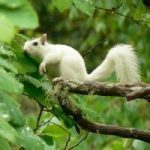An Unexpected Thrill – Bird Watching in the Blue Ridge Mountains of NC
Birdwatchers are sometimes surprised by the number of species that live permanently or part-time in the Blue Ridge mountains of North Carolina, and even more so when they spot a species not normally found this far south.
Why Birding in the NC Mountains is so Unique – Mountain Geology Affects Migration Patterns

A number of bird species, including the slate-colored junco, black-capped chickadee, and saw-whet owl maintain this unique migratory pattern today.
Migratory Birds Visit the NC Mountains in Spring and Fall, Making the Blue Ridge a Bird Watchers Paradise
The 80+ species of migratory birds that visit the region in spring and fall delight both serious birders and those who watch the visitors at their back-yard feeders. Among others, the horned lark, snowy egret, bald and golden eagle, sandhill crane, black-billed cuckoo, and olive-sided flycatcher have been sighted as they pass through the mountains. The rare and majestic peregrine falcon may migrate as far south as Argentina, but a number return to nest on cliffs in the North Carolina mountains.
Some of the Best Bird Watching Can Be Found on the Roads Less Traveled – Birding in the Backwoods and Farmland of NC
Over 200 species of birds call the North Carolina mountains home, including those that migrate between lower and higher elevations. Familiar to residents are colorful species such as the eastern bluebird, which is often spotted in open meadows, the northern cardinal (North Carolina’s state bird), and the American goldfinch, as well as the dove, crow, chickadee, Carolina wren, towhee, sparrow, and titmouse.
Bird watchers report that some of the best birding in the region is done in farm country, in backwoods areas where mixed habitats are plentiful.
Photo courtesy of Simon Thompson.
Popular Birding Sites and Local Bird Watching Resources
- Beaver Lake Audubon Bird Sanctuary (Asheville, NC)
- Biltmore Estate (Asheville, NC)
- Bluff Mountain (West Jefferson, NC)
- Craggy Gardens (Blue Ridge Parkway, Milepost 364.6)
- Devil’s Courthouse (Blue Ridge Parkway, Milepost 422.2)
- Jackson Park (Hendersonville, NC)
- Joyce Kilmer Memorial Forest (near Robbinsville, NC)
- Lake Lure and Chimney Rock State Park (Lake Lure and Chimney Rock, NC)
- Linville Gorge Wilderness Area (Linville Falls, NC)
- Moses Cone Memorial Park and Julian Price Memorial Park (near Boone, NC)
- Mount Jefferson State Park (Jefferson, NC)
- Mount Mitchell State Park (near Burnsville, NC)
- New River State Park (near Jefferson, NC)
- North Carolina Arboretum (Asheville, NC)
- Pink Beds (near Blue Ridge Parkway Milepost 412)
- Roan Mountain (near Bakersville, NC)
- Shining Rock Wilderness Area (between Blue Ridge Parkway Mileposts 412 and 431)
- Whiteside Mountain (south of US 64 between Highlands and Cashiers, NC)
Click on the link below to hear a Living Traditions Moment about Biodiversity in Western North Carolina








